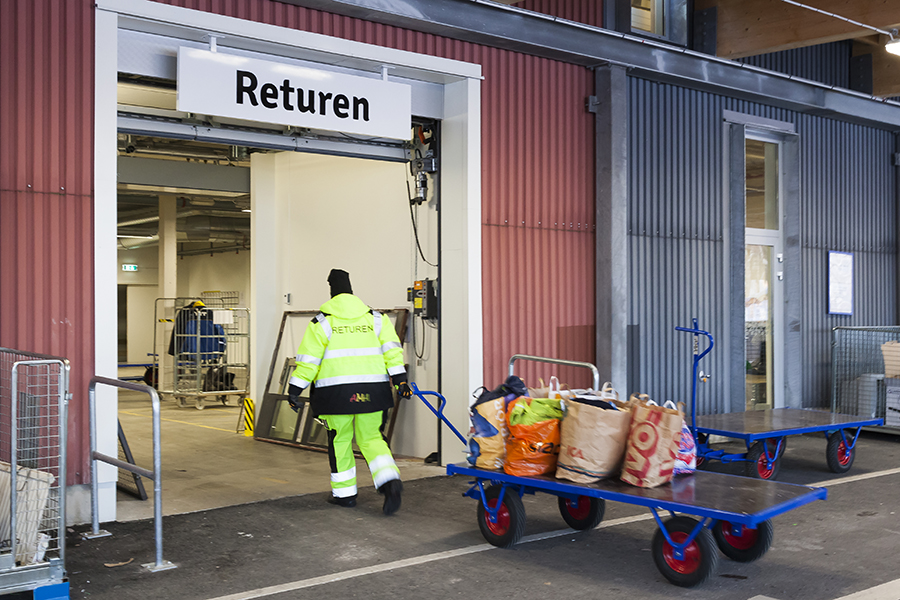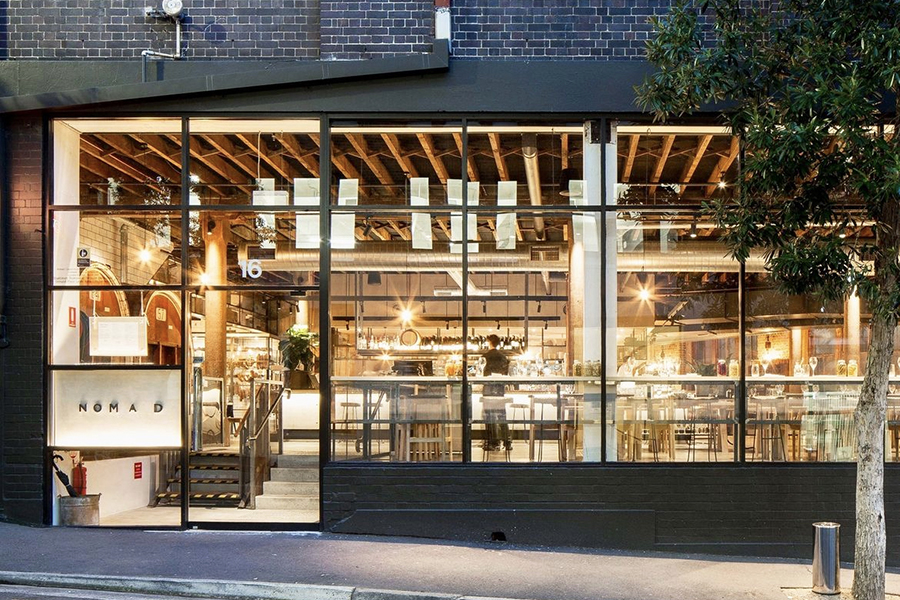The retail legislation in Victoria is much the same as the retail legislation in the other Australian jurisdictions. One of the main differences is that, in NSW for instance, “retail premises” are defined by reference to a long list of traditional retail shops, like “barbers”, “butcher shops”, “delicatessen shops” and some of my favourites, “fairy shops”, “hot water system shops” and “nut bar shops”.
One of the beauties of the NSW system is that if you are on the list, (or if you are a shop in a shopping centre), you are in. If you are not, then you’re out. It’s pretty cut and dried.
The Victorians, on the other hand, go for a general definition of “retail premises”, so that if the premises are (or are to be) used for the retail sale or hire of goods or services, they are in.
While I am no fan of the nut bar approach, the unstructured Victorian definition has let the court off the chain, with the result that pretty much any leased premises are now at risk of being retail premises. Both Acts started life as dogs. Because of the waffly definition, the Victorian Act has evolved into a hyena.
The High Court has recently refused to grant leave to appeal the decision of the Victorian Court of Appeal in IMCC Group (Australia) Pty Ltd v CB Cold Storage Pty Ltd [2017] VSCA 178 (IMCC).
The Court of Appeal decision is one of the things that makes me glad I am not a Victorian.
In case you missed it, the Court held that a lease of a refrigerated industrial warehouse the size of Kentucky, was a lease of retail premises.
The judgment continues a series of troubling precedents, and now takes the Retail Leases Act 2003 (Vic) (RLA) a long way off the reservation.
At para 15 of its judgement, the Court of Appeal said that “the only controversy between the parties is whether the leased property is used for ‘the retail provision of services’”.
The Court then embarked on a lengthy analysis of how the premises were actually used, followed by a review of precedent cases dealing with “the ultimate consumer test”.
That is like analysing how far west you have to sail before falling off the edge of the earth, rather than first establishing whether or not the world is flat.
It is a shame the Court failed to address the real question, which was whether or not the property comprised “retail premises” as defined in s4 of the Act. This is a shame because the property industry now has to manage the consequences of the Court’s blinkered analysis.
Section 4 of the RLA defines “retail premises” (relevantly) as “premises…that under the terms of the lease…are used, or are to be used…for the retail provision of services” (emphasis added).
Pausing here, it is evident from the emphasised words above that the use of the premises is to be ascertained from the terms of the lease, not from the way in which the premises are actually used.
Approaching the issue from this flank produces a different result to the curious outcome achieved by the Court. This different approach is consistent with established canons of contract interpretation, and is actually desirable, in order to give the RLA sensible operation.
In Codelfa Construction Pty Ltd v State Rail Authority of NSW [1982] HCA 24; (1982) 149 CLR 337 (11 May 1982) (at para 12), Mason J quoted with approval the speech of Lord Wilberforce in L. Schuler A.G. v. Wickman Machine Tool Sales Ltd. [1973] UKHL 2; (1974) AC 235:
“The general rule is that extrinsic evidence is not admissible for the construction of a written contract; the parties’ intentions must be ascertained, on legal principles of construction, from the words they have used…”.
Those principles of construction extend to a requirement for the “examination of the text of the documents in the context of the surrounding circumstances known to the parties, including the purpose and object of the transaction and by assessing how a reasonable person would have understood the language in that context” (per Allsop J in Franklins Pty Ltd v Metcash Trading Ltd [2009] NSWCA 404 at [14]). The interpretation of contracts in this way requires analysis of the words used in the contract (understood in light of what the parties knew at the time of execution) not informed by what the parties subsequently did.
In the context of leases, the principle was succinctly summarised by Young J in Moweno Pty Ltd v Stratis Promotions Pty Limited [2003] NSWCA 376 (at 49) (consistently with what the High Court held in Thompson v Easterbrook (1951) 83 CLR 467):
“…that when looking for the purpose of a lease, a court looks to the use reasonably contemplated by the parties when they entered into the lease (except when they have varied that intention). Further, if the lease actually states the use that is conclusive.”
The Court of Appeal did not apply this approach. Instead, it went straight to the extrinsic evidence of actual use. In doing this, it ignored the primary, express requirement of s4, that the use of the premises is to be ascertained “under the terms of the lease”.
On the established principles of contract interpretation summarised above, it would be necessary to establish from the words used, whether “under the lease” the premises are used or are to be used for the retail provision of services”.
In IMCC, the permitted use clause said that the tenant would “not use or permit to be used the Demised Premises for any purpose other than as set out in Item 11.” Item 11 said: “Cold and cool storage warehouse and transport facility”.
The first point to note about this clause is that the IMCC lease adopted a negative use covenant. It was not a requirement that the premises “are to be used”. Rather, the premises were not to be used, other than as a cold storage warehouse.
The established view of covenants expressed in these terms is that it is not necessary for the premises to be used at all. However, if they are used, they can only be used for the express permitted purpose (Australian Safeway Stores Pty Ltd v Toorak Village Development Pty Ltd [1974] VR 268).
Negative use covenants are common in industrial leases, because the landlord generally does not care whether or not the tenant uses the premises, as long as the rent is paid.
They are rare in retail leases, because the landlord wants to ensure that all tenants are obliged to trade, so that a full range of offer is available to the public. In retail shop leases, “must trade” covenants are therefore the norm.
It follows that in the IMCC case, there was no requirement “under the terms of the lease” that the premises “are used” or “are to be used” for the retail provision of services, since there was no requirement that the premises be used at all. And it must also therefore follow that the lease was not a lease of retail premises.
Even if it could be said that the negative use covenant had the effect that the premises “are to be used” as a cold store warehouse, there is nothing to suggest “under the terms of the lease” that this use would entail the retail provision of services. There is nothing about the description “cold store warehouse” to suggest a requirement for the provision of services by retail. The tenant might use the premises for this purpose. But equally, it might not.
This is to be contrasted with a permitted use which says something like “physiotherapy” or “travel agent” or “patent attorney”.
Those uses necessarily entail the provision of a service. It would be easy to conclude “under the terms of a lease” that required the tenant to perform those services, that the premises “are to be used” for the provision of services.
It is not possible to arrive at the same conclusion where “under the terms of lease” the premises are a cold storage warehouse, which might or might not be used at all or which might or might not be used for the provision of a service.
No doubt the court was seduced by the words in s4 of the RLA “are used or are to be used” (emphasis added). It could be said that on my view, the words “are used” have no work to do. It could also be said that the words “are used” did not appear in the legislation considered by the court in Thompson v Easterbrook, and Moweno.
There is some force to this argument, but against it I would say that on the approach taken by the Court of Appeal, the words “are to be used” equally have no work to do. I would also say that the words “are used” might have work to do on my approach, in a case where, for example, the permitted use in the lease was “any purpose permitted by law”. In that case it might be permissible to have regard to actual use.
It is also perfectly conceivable that a lease could provide that the premises must be used for the specified purpose, from the commencement date. This would be a requirement under the terms of the lease, that the premises “are used”. It is equally conceivable that a lease could provide that the premises must be fitted out for 1 month after the commencement date, following which they must be used for the specified purpose. This would answer the description in s4 that under the terms of the lease, the premises “are to be used”. This approach responds to the actual words of s4, not just to some of them.
The approach of the Court of Appeal also tangles up the machinery of the RLA.
The RLA imposes obligations on landlords which must be ascertained before the lease is entered into. If you have to wait to see how the premises “are used” by the tenant, before ascertaining if the Act applies, it is too late.
Section 15(1) provides that the landlord is liable to a penalty if it fails to provide a copy of the proposed lease as soon as negotiations commence. And section 17(3)(c) entitles the lessee to terminate the lease if it is not given a disclosure statement at least 7 days before the lease is entered into.
On the approach adopted by the Court of Appeal, a landlord will not know whether it has complied with the law until after it has broken it!
This is because the landlord will not know how the premises “are used” until after the tenant uses them. Even then, the landlord might not know. In the cold storage example considered by the Court of Appeal, the tenant might:
(a) not have used the premises at all, in which case they would not be retail premises;
(b) have used the premises to store its own turkeys, in which case they would not be retail premises;
(c) have stored turkeys for others for a fee, in which case they would be retail premises;
(d) have blended (b) and (c) in which case an inquiry would be necessary, to ascertain what was the predominant use;
(e) have told the landlord it would store its own turkeys but then changed its mind and stored turkeys for others for a fee, in which case who knows, but on the Court of Appeal reasoning, they would have been retail premises.
This shambles is avoided if s4 is simply applied in accordance with its terms, consistently with established principles of contract interpretation. Surely the RLA should be applied in a way that enables the contracting parties to proceed with certainty. The necessary certainty is achieved if the use of the premises is ascertained (in conformity with s4) under the terms of the lease, rather than by reference to extrinsic evidence of ex post facto use.
Unfortunately, the Court of Appeal decision now represents the law in Victoria. This means that owners of industrial warehouses will need to navigate the retail lease legislation mumbo jumbo.
Call me naïve, but when a lease of an industrial warehouse is a lease of retail premises, I think the trolley has left the track.




















